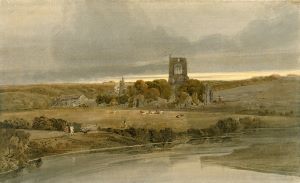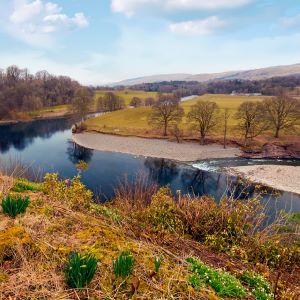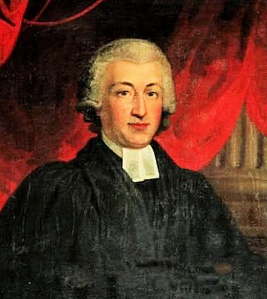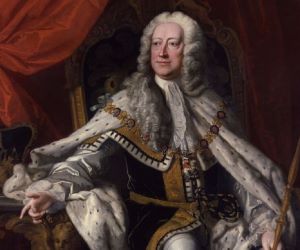Introduction
Although a quarter of a century is not usually a cause for celebration, we are pleased and somewhat surprised that we have moved so far. SUES FORUM only sprung into life in March 2020 at the start of lockdown. Its intention was to give SUES members some intellectual nourishment to justify their continuing membership and to make up for the lack of face-to-face courses and talks. Whether it has succeeded in this task only you can judge. However, we have at least managed to keep going and have now reached a significant milestone. Of course, the other innovation provoked by the restrictions was the use of Zoom, which was for many of us an advance in our technological capacities. We are still using this method for committee meetings and are exploring the possibilities of using it as an aid to members who have difficulty in getting to meetings.
You will notice above the phrase that SUES intends to adopt as its strapline. For those who aren’t au fait with modern parlance that means ‘a short or easily remembered phrase that helps people to recognise an organisation and its purpose.’ It’s like the school motto, which we used to have in the old days. For example, ‘Non nobis solum sed toti mundo nati’. (So now some of you can guess where John Sharp went to school.).
The course on Norman Kings and Queens has passed its midway point, and the next stage of the journey through the ages of the Country House starts in January. (Whether Roger Mitchell feels that the twenty first century merits a tour of its country houses remains to be seen.) Some members have already looked as far forward as the course on the Human Brain and have secured their places. Our next Friday afternoon talk is on December 10th and details are given below.
Experience of Peter Firth’s course has shown that 20 people can be comfortably and safely accommodated in the small room at All Saints. However, we cannot predict numbers for Alan Potter’s talk and Roger Mitchell’s course already has 27 registered participants. We, therefore, feel that it would be safer to use the main hall for these events. The previous occasion of using this indicated that it is perfectly feasible.
Colin Bernhardt 1937-2021
We included a brief reference to Colin’s death in the October issue. The Society was represented as his funeral at Holy Trinity Church. Colin was a regular attender and valued participant in continuing education classes at All Saints for many years. He became an active member of SUES but recently his health had been poor.
He spent his whole career with Smith Coney, Liverpool Cotton Merchants. Between 1954 and 1998, he rose from messenger boy to chairman and twice served as President of the Liverpool Cotton Association. His work took him round the world including two years in Uganda. After retirement, he relished the opportunity to develop his interest in history and, as his sons put it, with a touch of humour, in their funeral obituary, ‘he would then pass on interesting, and sometimes not so interesting, bits of information about Lancashire Manor Houses etc etc’.
Roger Mitchell
Forthcoming Friday Meeting: Science and Psuedo-Science
Friday 10th December 2:30pm at All Saints Hall

Our next Friday talk will be by our Chairman, Alan Potter. This will be an hour of serious fun starting with defining the nature of science, then looking at topics that have been characterised as pseudoscience by academics or researchers. In doing so we can learn more about questionable, fraudulent or dangerous claims and practices, both in the past and currently – many of which are humorous parodies of poor scientific reasoning.
When Did England Look Its Best? Some Further Thoughts
In my article in the September edition of Forum, I suggested six possible answers to this question – 700AD, 1200AD, 1500AD, 1660AD, 1800AD and 1910AD. I tried my best to be neutral, but either I failed or else the answer is obvious. Whatever the reason, there was a general feeling that 1800AD was the most appropriate date and that would be my answer as well.

It makes sense for both environmental and aesthetic reasons and I will take them in turn. Environmental concerns rightly head today’s agenda, especially after Cop 26, and with the benefits of hindsight, we would probably agree that somewhere around 1800, it became clear that an industrial revolution was taking place and that it and the accompanying population growth was unstoppable. Life in 1800 had more in common with 1500 than it did with 1900. In the 300 years before 1800, the country’s population had risen threefold, and the country had needed to house and feed an extra 5.5m people. In the following century the population had almost quadrupled and room had to be found for more than 20 million extra people. In 1800 almost all power was provided by water (for industrial processes), wind (for the royal navy, merchant ships and fishing boats), and horses (for land travel by road and canal and for agriculture). A century later the country relied upon steam power created by burning coal. The economy was transformed and so was the look of the place. Man’s imprint was much heavier and it was very much harder to get rid of it.
In 1800, by contrast, it did seem that man, or perhaps more accurately rich men, were trying to improve the look of the place. The Palladian and Neoclassical styles of Georgian architecture had proved well suited to both urban and rural buildings. Classical temples could be adapted to house rich landowners or, on a more modest scale, houses and workshops of merchants and artisans could be given dignity by sash windows, regular fenestration and a classical doorcase. In case, the visitor became a little bored with too many Georgian squares and terraces, there was a growing interest in and respect for gothic architecture. Most English towns had fewer than 10,000 inhabitants and open countryside was close at hand. That countryside was productive but not intensively farmed and so hedgerows and copses were common, especially as hunting and shooting were central to the life of the gentry. Significant areas of the countryside were managed with even greater care. Lancelot Brown had died in the 1780s, but his successors continued to improve the landscape and develop its capabilities, and Brown’s new landscapes from the middle of the 18th century were now coming to maturity.
Perhaps because continental travel was restricted by the wars with France from the 1790s to 1815, travel within Britain became more popular. A tour of Derbyshire might do the trick, as Elizabeth Bennett found, but best of all was a visit to those particularly picturesque landscapes of the Wye Valley and the Lake District where the search for the sublime could be satisfied.
These are all good reasons to choose 1800 and perhaps the clinching argument is that we can still see those townscapes and landscapes as contemporaries experienced them, because the early 19th century was the golden age of English landscape painting. Turner, Girtin and Constable were all in their mid 20s in 1800 and there were many other highly competent artists and engravers, whose work would be accessible to a wider public.

Turner’s painting inspired Ruskin to describe this as ‘the loveliest view in England’.
I hope that my question provided the opportunity for reflection and perhaps even a degree of nostalgia for a period that we never actually knew. John Sharp captures this perfectly when he puts himself into a rather cosy position in England at that time.

When did England look its best – or when would I like to have lived? They are not quite the same question. However, I’ll blend the two answers by suggesting the middle to latter part of the eighteenth century. The landscape is not yet destroyed by the coming of factories and factory towns, although enclosure is under way in the fields. We do have canals, but then canals are quite an attractive addition to the countryside. It’s Blake’s vision of Jerusalem, with John Clare to fill in the detail in his observations of country life, though he did live a little later. A population of 7-8 million means there’s not a sense of overcrowding. There are no cars, aeroplanes or even railways, no radio and television, and one can live without a computer.
I quite see myself as a Parson Woodforde-type vicar, living in a fine rambling vicarage with an attractive garden. There are hills and woods in the neighbourhood with plenty of good walks and some interesting historical monuments. I have a splendid library, where I spend much time reading and writing. My church, where I preach ‘religion without enthusiasm’ to a docile population, has many medieval features. The local squire is friendly and generous, and my stipend is ample. I have friends of similar academic and literary interests, with whom I am able to share hospitality with stimulating talk. Diligent servants attend to basic household needs. I eat and drink well: it is a comfortable life.
Too good to be true? Yes, of course, but it does contain some truth and that enjoyment of a quiet and peaceful life has a lot to recommend it.
Roger Mitchell
A Poem Slandering George II
I found the following poem during my research into the Scarisbrick family. It was in the Dicconson family papers, which I was consulting because Charles Scarisbrick was Charles Dicconson prior to inheriting the Scarisbrick estate. He took the name Dicconson in 1809 when he inherited the Wrightington and Parbold estate on the death of his father.
Both the Scarisbricks and the Dicconsons were Catholic and zealous Jacobites. William Dicconson’s estate was confiscated after the 1715 rebellion and he died in exile in St Germain in 1743. His younger brother, Roger, was outlawed in 1715 but appears to have retained the estates. Keeping such a poem, even in personal papers, must have been risky as Jacobite supporters were hunted down.
The staff at Lancashire record office described this poem as slandering George I and dated it circa 1720, but as Roger Mitchell pointed out he believes it to be later and slandering George II. He pointed out that the crucial section is:
“But soon from the North there arriv’d an express………
Defeated was Charlie and his army all gon.’
In 1745 ithe Young Pretender (Bonnie Prince Charlie) was defeated at Culloden in 1746. Further proof is in the following:
“Whereas to my offspring there’s Freddy, my son
Whom you wish and I wish may come to the throne…….
Then there’s Billy my darling that blood thirsty boy.’
‘Freddy’ is George II’s elder son, Frederick, Prince of Wales. ‘Billy my darling that bloodthirsty boy’ is William, Duke of Cumberland, known as ‘Butcher Cumberland’ after commanding the British army at Culloden. Hence the description:
“He’ll ravish and plunder; he’ll burn and destroy”.

And so to the poem.
As the devil was walking o’er Briton’s fair isle George spy’d on his phis a particular smile And say’d my old friend if you have leisure to tarry Lets have an account of what makes you so merry. Old beezibub turn’d at a voice he well knew And stoping cry’d Oh brother George it is you Where my business of consequence ever so great I always find time on my friends sir to wait. This morning at 7 I set out from Rome Most fully intending eer this to have been home Pray stay sir says George and took hold of his hand You know that St James is at your command. Pray what has St James our great monarch begun And what does he think of his brave gallant son Why when first I beheld him, old satan reply’d He seem’d to have verry great hopes on his side But soon from the North there arriv’d an express With papers that gave me great joy I confess Defeated was Charlie and his army all gon I thought on my soul I should leap over moon Of great Charlies descendants I am only afraid Against my dominions their projects are laid Leave a Stuart to govern old England again Religion and honesty then too might reign I often trip over to France and to Spain To visit my princes and see how they reign But of all of my servants north, south, east & west I speak it sincerely George thou art the best. George pleased with the complement smiles like a fool And bowing said sir I hope you don’t flatter me too Tho the trouble I give you int much I must own For as to religion you know I have non Whereas to my offspring there’s Freddy, my son Whom you wish and I wish may come to the throne For by all men of wisdom and sense tis allow’d If he do’s there no harm, he will do there no good Then there’s Billy my darling that blood thirsty boy He’ll ravish and plunder; he’ll burn and destroy I need say no more, for you know very well That murders a virtue, in which he excels They shook hands at parting and each bid adieu Old beezibub mutter’d these words as he fled May thee and thy offspring for ever reign on For the devil cant find such a race when you’re gon.
Mary Ormsby
Contacts
Chair: Alan Potter
alanspotter@hotmail.com
07713 428670
Secretary: Roger Mitchell
rg.mitchell@btinternet.com
01695 423594 (Texts preferred to calls)
Membership Secretary: Rob Firth
suesmembers74@gmail.com
01704 535914
Forum Editor: Chris Nelson
chris@niddart.co.uk
07960 117719
Facebook: facebook.com/groups/southportues
See our archive for previous editions of the SUES Forum!